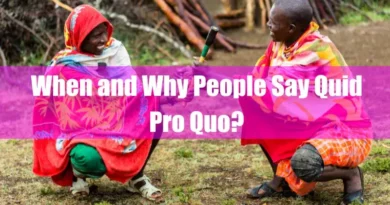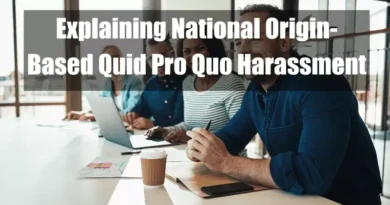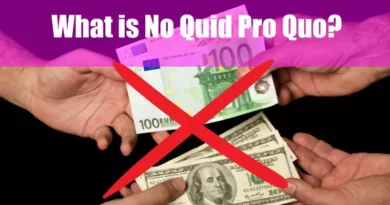How Social Media Influences Quid Pro Quo Harassment
Takeaways
| Key Points |
|---|
| Social media has significantly impacted the fight against Quid Pro Quo harassment by amplifying victim voices, increasing public awareness, facilitating community support, and encouraging organizational accountability. |
| Victims who once faced barriers in speaking out can now share their experiences widely, with movements like #MeToo providing a supportive platform and fostering solidarity. |
| Additionally, social media has democratized information about workplace harassment, making legal concepts more accessible and encouraging public discourse that pressures organizations to act responsibly. |
| Online support networks, often in the form of private groups and forums, offer victims a safe space to connect, share resources, and find empowerment without fear of retaliation. |
| Furthermore, the public scrutiny that social media brings compels companies to address harassment claims transparently and swiftly, leading to policy changes, firings, and a broader cultural shift towards zero tolerance for workplace misconduct. |
Introduction
Social media has emerged as a powerful tool in addressing workplace harassment, particularly in cases of quid pro quo harassment. While social media often receives criticism for spreading misinformation and enabling harassment, it also offers significant positive impacts.
Social media is reshaping how workplace harassment is understood and addressed by amplifying victim voices, increasing public awareness, and pressuring organizations to adopt more transparent and accountable practices.

Amplification of Victim Voices
One of social media’s most significant positive impacts on quid pro quo harassment is the amplification of victim voices. Traditionally, victims of workplace harassment faced significant barriers in coming forward, often fearing retaliation or disbelief. Social media platforms, however, have provided a space for victims to share their stories more widely and connect with others who have had similar experiences.
Sharing Stories and Building Movements
Platforms like Twitter and Facebook have been instrumental in allowing victims to share their stories with a global audience. Social media’s viral nature means that a single post or hashtag can quickly gain traction, bringing widespread attention to individual harassment cases. For instance, the #MeToo movement, which began as a grassroots effort to highlight the prevalence of sexual harassment and assault, quickly became a global phenomenon.
Victims who might have otherwise remained silent found a supportive community online where they could share their experiences and receive validation from others.
Case Studies of Social Media’s Impact
Several high-profile cases have demonstrated the power of social media in addressing quid pro quo harassment. In some instances, social media exposure has led to positive outcomes for victims, including legal action and changes in workplace policies. For example, the public outcry generated by social media campaigns has compelled companies to take immediate action against perpetrators, often resulting in firings, resignations, or settlements.
These cases underscore the role of social media as a catalyst for change, offering victims a platform that can lead to tangible results.
Increased Public Awareness and Education
Beyond amplifying individual voices, social media has played a crucial role in educating the public about quid pro quo harassment. In the past, such issues were often confined to legal circles or HR departments. Still, social media has democratized access to information, making it easier for the general public to understand the nuances of workplace harassment.
Educational Content and Public Figures
Educational content shared on social media platforms has been instrumental in spreading knowledge about quid pro quo harassment. Influential figures, including activists, legal experts, and public officials, often use social media platforms to discuss these issues, breaking down complex legal concepts into accessible language.
Additionally, educational campaigns like LinkedIn have targeted professionals, offering webinars, articles, and discussion forums that deepen understanding of workplace harassment laws and prevention strategies.

Influence on Public Discourse
The widespread sharing of educational content has influenced public discourse, making quid pro quo harassment a topic of everyday conversation. This shift in discourse has led to greater awareness and a more informed public, putting pressure on organizations to address these issues more effectively.
Social media’s role in shaping public opinion cannot be overstated, as it has led to a cultural shift where harassment is increasingly recognized and condemned.
Facilitation of Community Support and Solidarity
Another positive influence of social media on quid pro quo harassment is facilitating community support and solidarity. Online communities have become essential spaces where victims can find support, share resources, and build solidarity networks.
Online Support Networks
Social media platforms have enabled the creation of online support networks where victims of harassment can connect with one another. These networks often take the form of private groups on Facebook or forums like Reddit, where members can discuss their experiences, offer advice, and provide emotional support.
Social media’s anonymity is particularly valuable in these spaces, allowing victims to speak freely without fear of reprisal.
Hashtags and Movements
Hashtags like #MeToo, #TimesUp, and #BelieveSurvivors have built solidarity among victims. These movements have brought together individuals from diverse backgrounds, creating a sense of collective action against harassment. The power of these movements lies in their ability to unite people around a common cause, fostering a sense of empowerment and reducing the stigma associated with speaking out.

Empowerment and Reduced Stigma
Through these online communities and movements, social media has helped reduce the stigma surrounding victims of quid pro quo harassment. By providing a platform where victims can share their stories without judgment, social media has contributed to a cultural shift where harassment is increasingly seen as unacceptable, and victims are more likely to be believed and supported.
Encouragement of Organizational Accountability
Social media has also been a driving force in encouraging organizational accountability regarding workplace harassment. The public nature of social media means that companies are under constant scrutiny, and any failure to address harassment claims can quickly become a public relations crisis.
Pressure to Act
Social media’s pressure on organizations to address harassment claims seriously cannot be understated. When cases of quid pro quo harassment are exposed on social media, companies are often forced to respond swiftly to mitigate damage to their reputation.
This has led to a greater emphasis on transparency and accountability within organizations as they seek to avoid the negative publicity resulting from mishandling harassment claims.
Examples of Corporate Responses
Numerous examples exist of companies taking corrective actions in response to social media exposure. In some cases, this has involved firing or disciplining employees who were found to have engaged in harassment. Companies have also implemented new policies or training programs to address the issue more effectively.
These actions demonstrate the power of social media in holding organizations accountable and driving them to take meaningful steps to combat harassment.
Promoting Transparency
Social media has also promoted greater transparency within organizations. Many companies now use their social media platforms to communicate their commitment to preventing harassment, sharing information about their policies and the steps they are taking to create a safer work environment. This transparency helps build trust with employees and the public and sets a standard for other organizations.
Promotion of Policy Changes and Legal Reforms
In addition to influencing organizational behavior, social media has played a crucial role in driving policy changes and legal reforms related to workplace harassment. The widespread sharing of information and the collective action facilitated by social media have led to significant changes in how harassment is addressed at both the organizational and legislative levels.
Influence on Policy
Social media campaigns have brought attention to organizations’ need for policy changes. Companies increasingly adopt more robust harassment policies in response to public pressure, often going beyond legal requirements to create safer work environments.
These policies often include clearer definitions of harassment, stronger reporting mechanisms, and more comprehensive training programs.
Case Studies of Legal Reforms
There have also been notable instances where social media activism has influenced legal reforms. For example, the increased visibility of harassment cases on social media has led to legislative discussions and new laws to protect workers from harassment. These reforms often focus on strengthening protections for victims, improving reporting procedures, and holding employers more accountable for preventing harassment.
Catalyst for Legislative Discussions
Social media has acted as a catalyst for legislative discussions around workplace harassment. Lawmakers are increasingly paying attention to the issues raised by social media campaigns, leading to more robust debates and the eventual passage of laws addressing these concerns.
Social media’s impact in this area is a testament to its power as a tool for social change.
Providing a Platform for Whistleblowers
Social media has become a valuable platform for whistleblowers who expose quid pro quo harassment. Its extensive reach has made it easier for individuals to share their experiences, often bringing attention to critical issues and prompting organizational responses.
However, while social media can offer some anonymity, it does not fully guarantee protection against retaliation.
Supporting Whistleblowers
Whistleblowers who expose harassment often face significant risks, including retaliation and potential career damage. Social media provides a platform where they can share their stories, sometimes anonymously or with the support of a broader community. This community support has played a crucial role in encouraging more people to come forward and report harassment. Nevertheless, the risks associated with speaking out remain substantial.

Impact of Anonymity and Reach
The potential anonymity that social media can offer is beneficial for whistleblowers, as it allows them to share their experiences with a reduced risk of immediate retaliation. The wide reach of social media ensures that their stories can be heard by a large audience, which can lead to increased awareness and prompt action.
In several high-profile cases, whistleblowers have effectively used social media to expose widespread harassment, leading to organizational responses and, in some cases, significant consequences for the perpetrators.
Corporate Social Responsibility and Brand Reputation Management
As the landscape of workplace harassment becomes increasingly scrutinized, companies are under greater pressure to demonstrate their commitment to corporate social responsibility (CSR). Social media is pivotal in how companies manage their brand reputation, particularly quid pro quo harassment.
Showcasing Commitment to Harassment Prevention
Companies increasingly use social media to publicly showcase their efforts to prevent harassment and promote safe work environments. This includes sharing updates on new policies, training programs, and the outcomes of internal investigations into harassment claims.
By doing so, companies build trust with their employees, customers, and the broader public. The transparency offered by social media allows companies to highlight their proactive stance on these issues, making it clear that they take harassment claims seriously.
Positive Influence of CSR Campaigns
CSR campaigns on social media can significantly influence public perception of a company, especially when they address sensitive issues like workplace harassment. For example, companies that actively engage in campaigns promoting gender equality, diversity, and inclusion are often seen as leaders in creating safe and supportive work environments.
This positive image can enhance brand loyalty and attract top talent who value these corporate values.
Enhancement of Workplace Training and Prevention Programs
Social media’s role in enhancing workplace training and prevention programs is another key factor in its positive influence on addressing quid pro quo harassment. The accessibility and reach of social media platforms have revolutionized how training resources are distributed and consumed.
Promoting and Sharing Training Resources
Many organizations now use social media to promote and share resources related to workplace harassment prevention. Platforms like LinkedIn have become hubs for professional development, offering access to online courses, webinars, and discussion groups focused on harassment prevention and workplace ethics.
These resources are often shared widely within professional networks, increasing their reach and impact.
Popularity of Online Training Programs
The popularity of online training programs, particularly those hosted on social media platforms, has surged in recent years. This shift toward digital learning allows companies to provide more frequent and accessible employee training, ensuring all staff members know their rights and responsibilities regarding workplace harassment. The interactive nature of online training, combined with the ability to track completion rates and engagement, makes these programs particularly effective in educating employees.

Influence on Modern Prevention Programs
Social media has also influenced the content and delivery of modern harassment prevention programs. Many of these programs now incorporate real-world scenarios and case studies that have been highlighted on social media, making the training more relevant and engaging for participants.
Additionally, the ability to receive immediate feedback and engage in discussions through social media platforms enhances the learning experience, helping to reinforce the importance of these issues.
Conclusion
As social media continues to evolve, its role in combating quid pro quo harassment will likely expand. The platforms that have proven effective in amplifying victim voices, educating the public, and holding organizations accountable will continue to be crucial tools in the fight against workplace harassment.
The positive influence of social media on addressing quid pro quo harassment is clear. Social media has become an indispensable tool in creating safer and more equitable workplaces by amplifying victim voices, increasing public awareness, facilitating community support, and promoting organizational accountability. As we look to the future, the role of social media in combating harassment will continue to evolve, offering new opportunities and challenges in the fight for workplace justice.
FAQ
What is the digital coercion mechanism in quid pro quo harassment on social media?
The digital coercion mechanism refers to the strategic use of social media platforms to pressure individuals by linking benefits or punishments to compliance. This practice exploits online communication channels to create an environment where consent is manipulated, and boundaries are continually breached.
How does social media leverage facilitate quid pro quo harassment?
Social media leverage involves the calculated use of one’s online influence to exert power over others, often pressuring them into unfavorable exchanges. This dynamic amplifies quid pro quo harassment by intertwining professional authority with personal threats, making resistance more difficult.
What role do online power dynamics play in quid pro quo harassment?
Online power dynamics encompass the influence imbalance in digital interactions, where certain individuals or groups use their status to control or manipulate others. These dynamics are intensified by social media algorithms and network effects, which can isolate victims and reinforce abusive behavior.
How does algorithmic amplification affect quid pro quo harassment on social platforms?
Algorithmic amplification occurs when social media algorithms unintentionally boost coercive messages or manipulative content, increasing their visibility. This phenomenon exacerbates quid pro quo harassment by repeatedly exposing targets to negative influences and reinforcing harmful power imbalances.
What is digital consent negotiation in the context of social media harassment?
Digital consent negotiation describes the process where online interactions involve implicit or explicit consent discussions, often under unequal power conditions. In social media environments, this negotiation can be skewed by coercive tactics, resulting in neither informed nor freely given consent.
How does virtual gender bias influence quid pro quo harassment online?
Virtual gender bias refers to the online stereotyping and discrimination that often underpins quid pro quo harassment, particularly targeting marginalized groups. Social media platforms can amplify these biases through user interactions and algorithmic reinforcement, intensifying abuse.
What are cyber influence factors in quid pro quo harassment on social media?
Cyber influence factors include the subtle pressures and persuasive online techniques that shape behavior and decision-making in coercive situations. These factors are critical in quid pro quo harassment as they create an atmosphere where digital authority is misused to compel compliance.
How do social media monitoring practices impact harassment prevention?
Social media monitoring practices involve using analytics and oversight strategies to identify and mitigate abusive behavior in real-time. By detecting patterns indicative of quid pro quo harassment, these practices can enable timely intervention and contribute to a safer digital environment.
What is digital boundary violation in quid pro quo harassment on social networks?
Digital boundary violation occurs when an individual’s personal or professional limits are persistently breached through intrusive online contact. Such violations in quid pro quo scenarios erode trust and create an atmosphere of continuous control and psychological pressure.
How does online reputation damage relate to quid pro quo harassment?
Online reputation damage happens when an individual’s digital image and professional credibility are undermined through malicious or coercive online actions. In quid pro quo harassment, perpetrators may deliberately harm a victim’s reputation to maintain power and silence dissent.
What is the role of digital social capital in quid pro quo harassment scenarios?
Digital social capital refers to the value and influence accumulated through one’s online networks and presence, which can be exploited in abusive interactions. Perpetrators may leverage this social capital to pressure individuals into compliance, further deepening the power imbalance inherent in quid pro quo harassment.
How does virtual authority abuse manifest in quid pro quo harassment on social media?
Virtual authority abuse is the exploitation of perceived or actual online power to coerce or intimidate others into unwanted actions. In digital quid pro quo scenarios, this abuse is frequently manifested through the misuse of official profiles or influential networks to assert dominance over targets.
How does social media exposure impact quid pro quo harassment dynamics?
Social media exposure amplifies the visibility of both the perpetrator’s actions and the victim’s experiences, often intensifying the psychological effects of harassment. This heightened exposure can perpetuate a cycle of public scrutiny and pressure, reinforcing the coercive tactics used in quid pro quo situations.
How does digital vulnerability contribute to quid pro quo harassment online?
Digital vulnerability describes the susceptibility of individuals to online manipulation, often due to gaps in digital literacy or inadequate privacy protections. Perpetrators exploit these vulnerabilities to engage in quid pro quo harassment, using persistent and sophisticated digital tactics to control their targets.
What are the key factors in online harassment policy enforcement for quid pro quo cases?
Online harassment policy enforcement involves systematically applying rules and guidelines designed to curb abusive behaviors on social media platforms. Effective enforcement requires coordinated efforts between platform moderators and regulatory bodies to promptly address quid pro quo harassment while safeguarding users’ rights.









